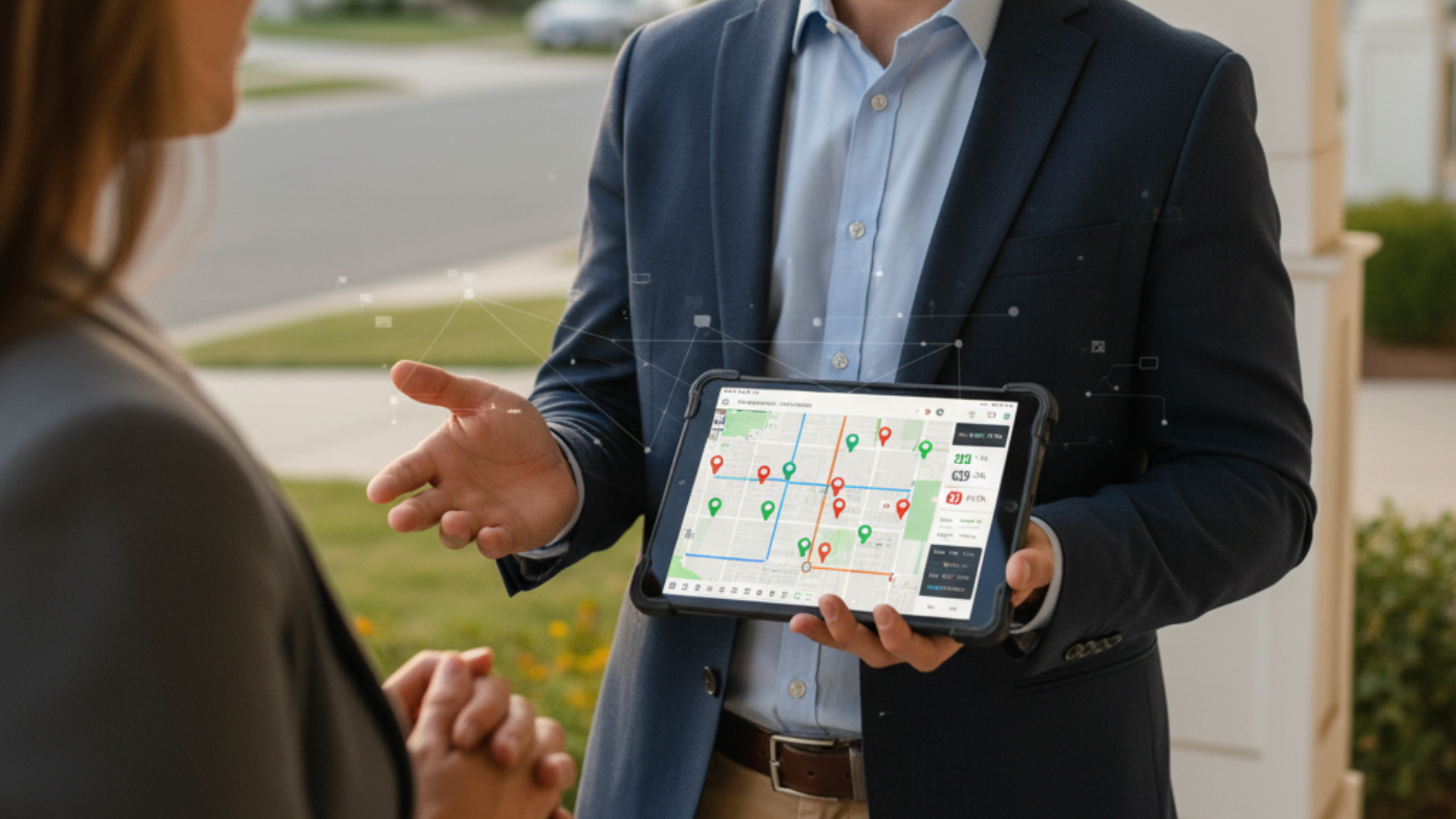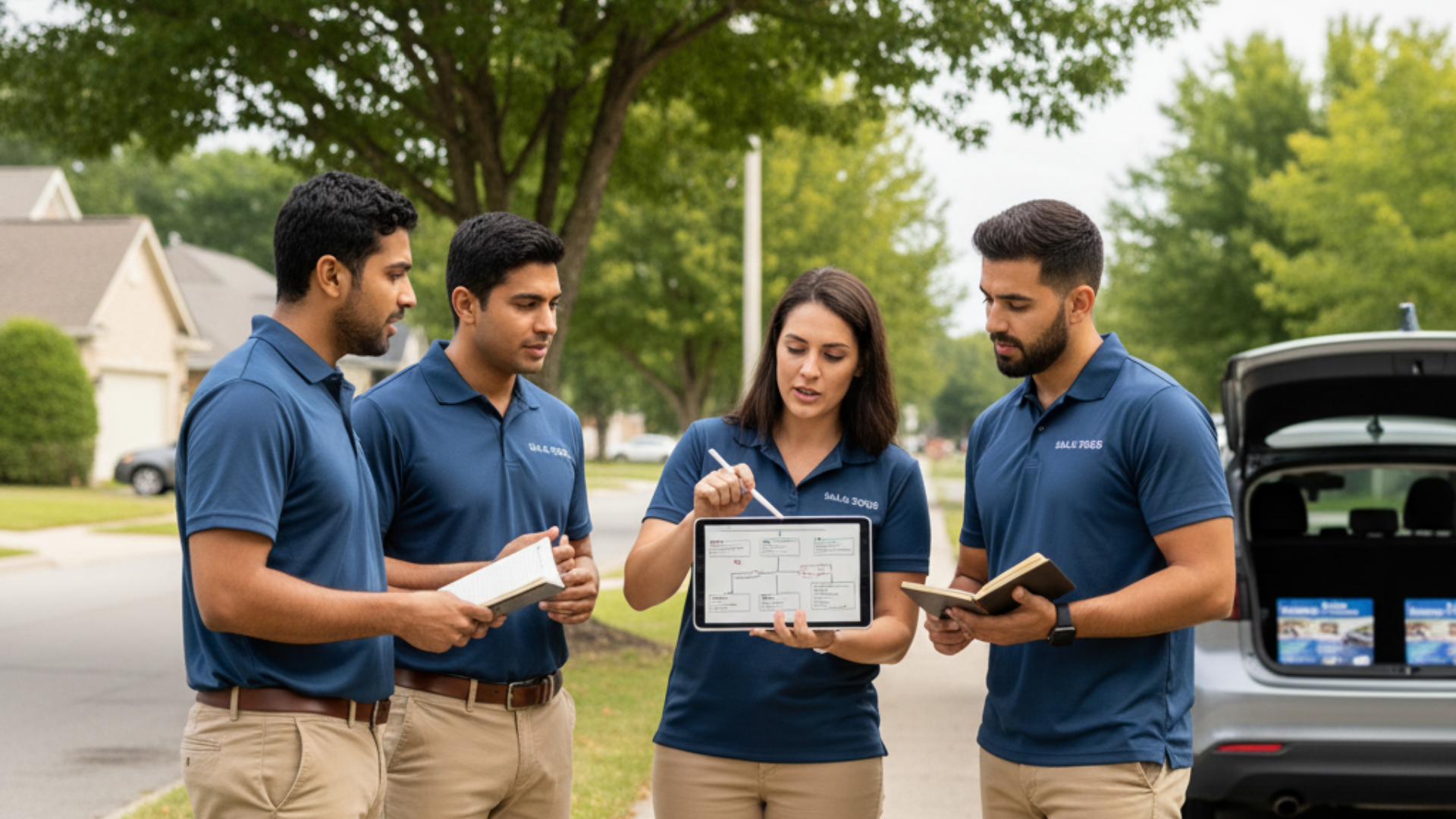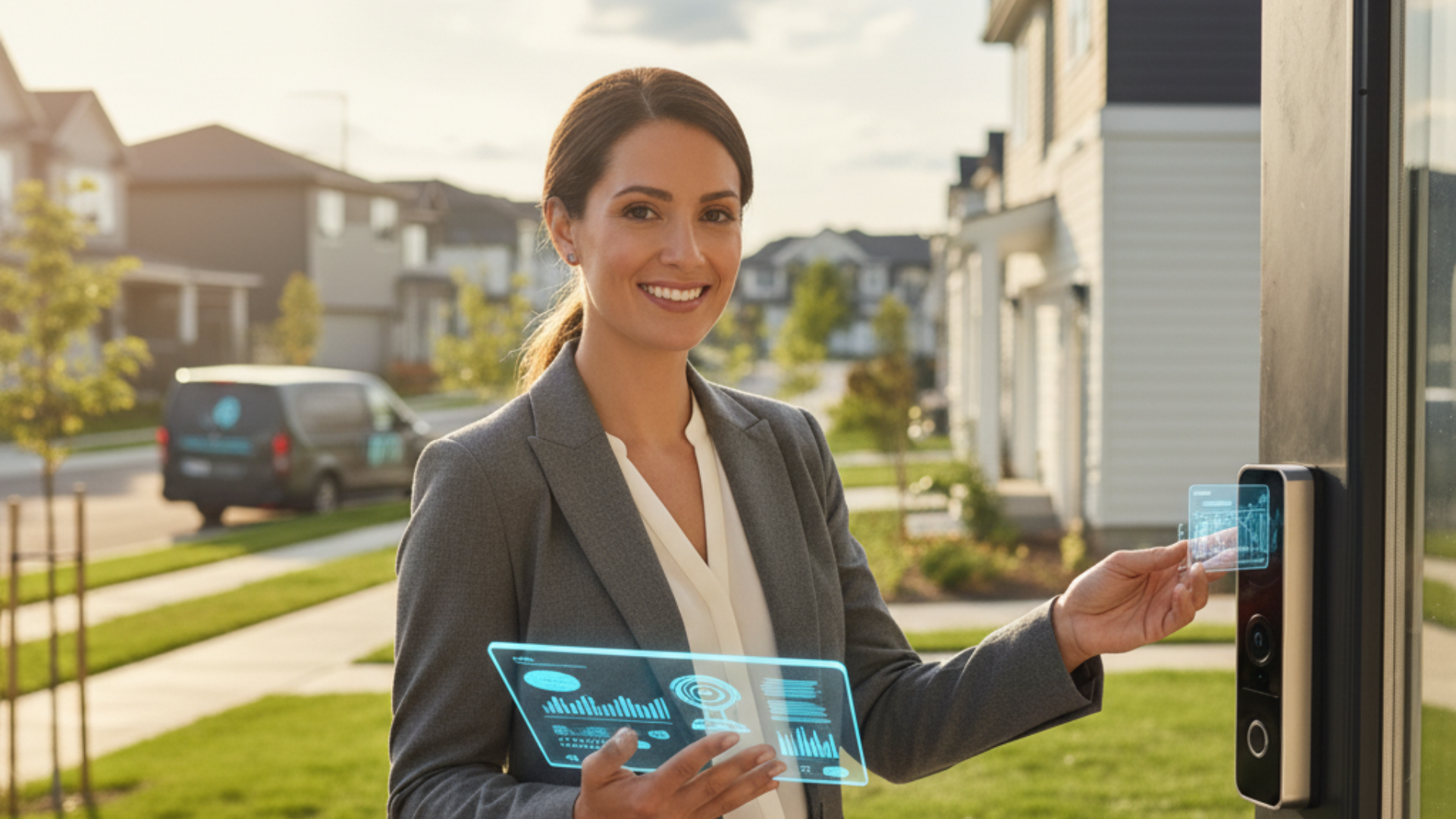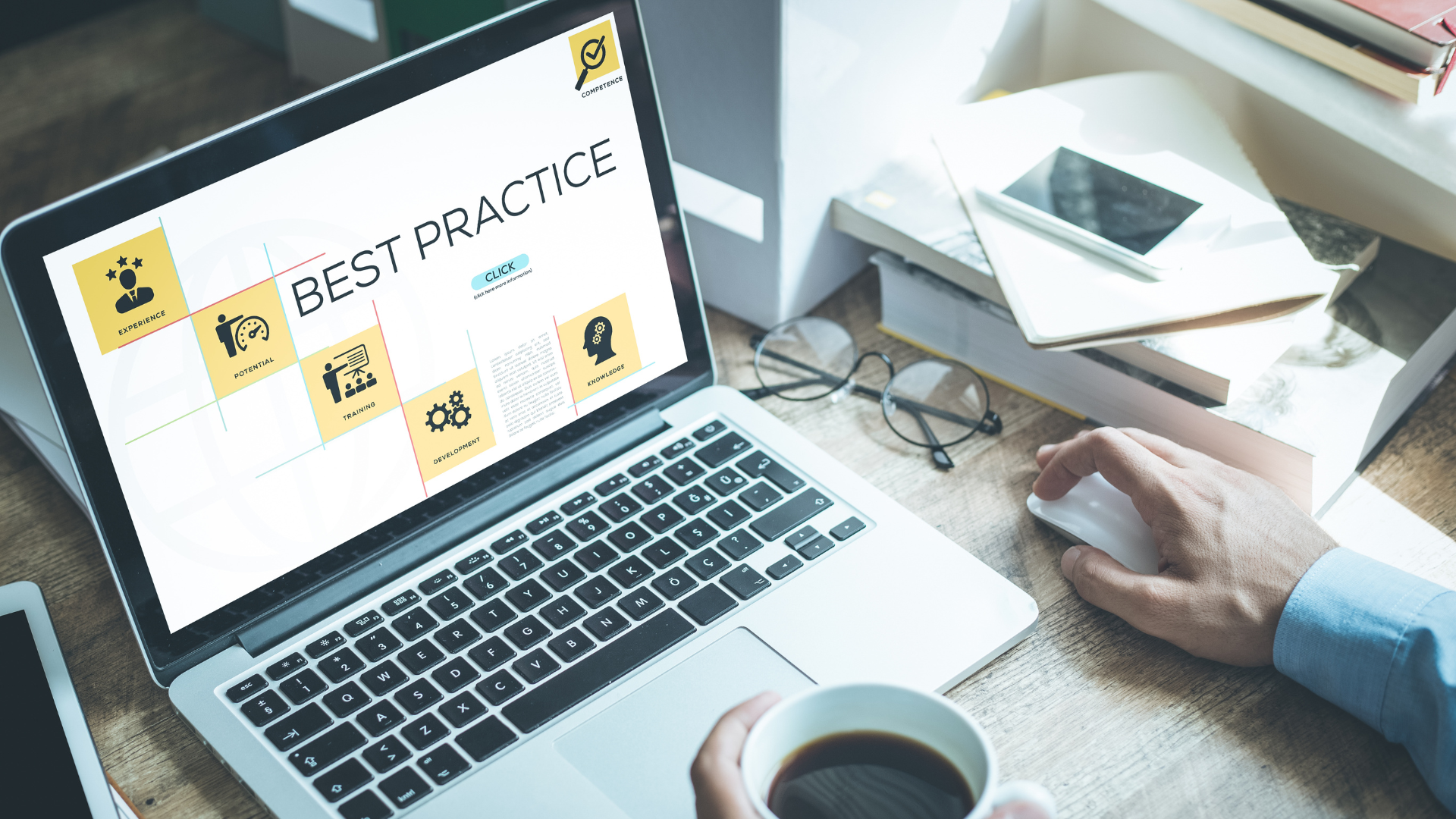There’s something timeless about face-to-face conversations that we often need to discuss. Whether you’re running for office, leading a grassroots movement, or managing a sales team, nothing builds trust like showing up at someone’s door, looking them in the eye, and having a real conversation.
But let’s not sugarcoat it: door-to-door canvassing is a force to reckon with, and it's tough. Knocking on doors takes courage, stamina, and persistence. And here’s the truth: most campaigns don’t fail because the cause isn’t worthy or the product isn’t good.
They fail because of avoidable mistakes: wrong timing, bad scripts, low morale, messy lists, or simply forgetting to follow up.
8 Common Pitfalls in Door-to-Door Campaigns -and How to Avoid Canvassing Mistakes
Think of canvassing like running a marathon, not a sprint. You can have the best shoes, the loudest cheer squad, and the strongest motivation, but if you take a wrong turn or forget to pace yourself, you’ll never reach the finish line in your search for success.
In fact, studies show that campaigns with poor canvassing strategies can waste up to 40% of their efforts on missed opportunities.
Therefore, this guide is your field manual, a plan to navigate through the challenges. We’ll walk you through eight of the most common pitfalls that derail canvassing efforts, why they happen, and most importantly, how to avoid them.
Along the way, we’ll sprinkle in relatable stories, practical fixes, and strategies to help you turn door knocks into real results.
If you’ve ever ended a canvassing day thinking, “We worked so hard, but what did we actually achieve with our prospects?”, this one’s for you.
Key Takeaways
- Timing, scripting, and morale decide your success. The right words at the wrong time are like fishing with no catch.
- Walk lists and follow-ups need data, not guesswork. Data is your GPS; without it, you’re just wandering.
- Empathy and respect build credibility. People may forget your pitch, but not how you made them feel.
- Tech like Knockbase turns effort into results. It’s your dashboard for tracking knocks, leads, and wins.
The Reality of D2D Campaigns Today
Door-to-door canvassing is still one of the most effective persuasion and mobilization tactics available.
That may not sound huge, but in close elections, those few points decide winners.
Experiments conducted by Eldersveld and Dodge demonstrated that canvassing and mailings have had a significant influence. Additionally, a study on voter turnout found that door-to-door canvassing increased participation by 6%.
And yet, despite these powerful stats and useful tips, many campaigns stumble. Why? Because enthusiasm and hard work alone aren’t enough, you need strategy, structure, and the ability to adapt.
Let’s look at the 8 mistakes holding canvassers back as we prepare for election day, and how to turn each one into an opportunity.
What are The 8 Pitfalls That Could Be Costing You Leads
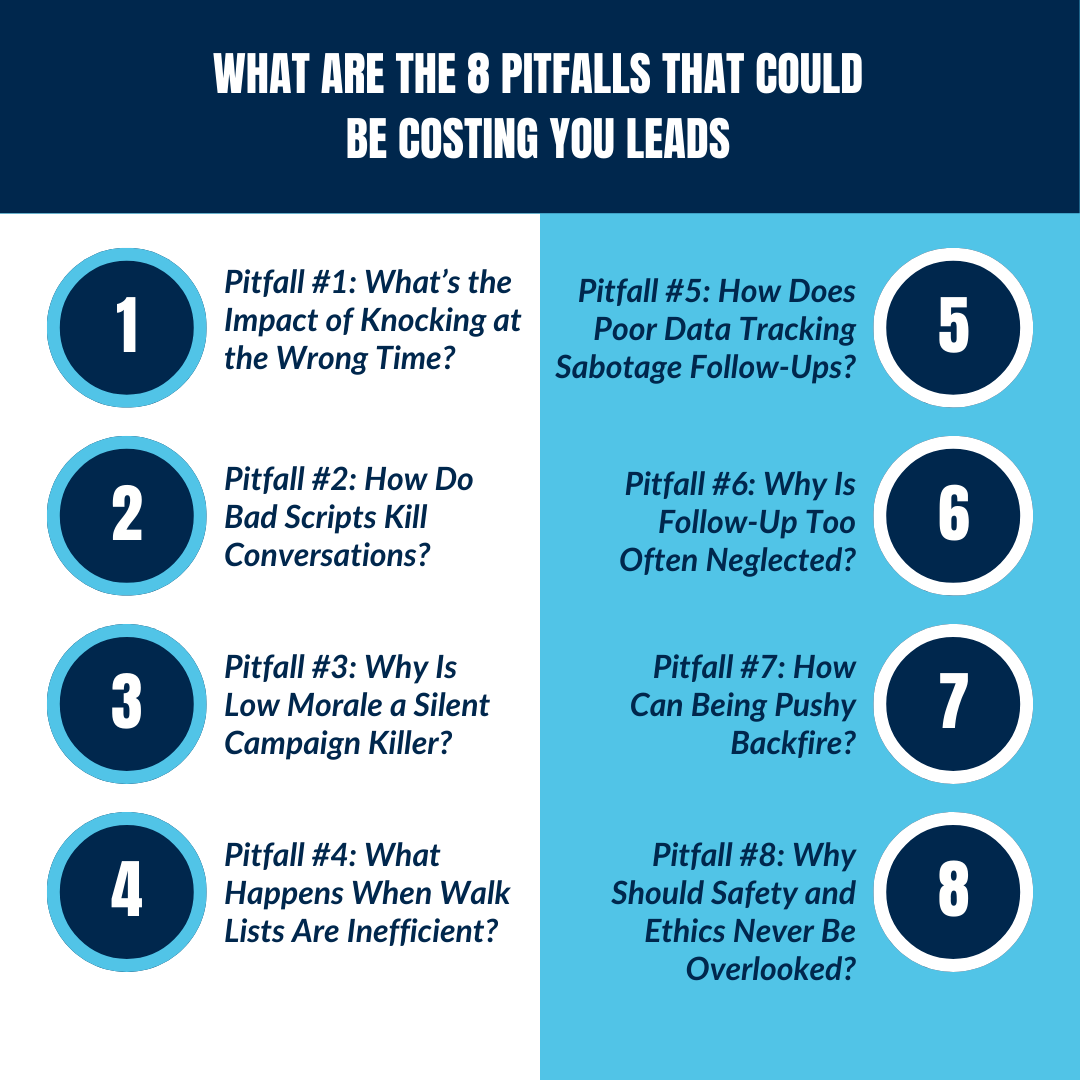
Pitfall #1: What’s the Impact of Knocking at the Wrong Time?
Picture this: a successful volunteer knocks on a door right as dinner hits the table. The resident opens with one hand, holding a fork in the other, kids running wild in
the background. The volunteer launches into a pitch. You can guess how that ends.
The data: canvassers typically reach 20–27 doors per hour in suburban neighborhoods, saving both time and money.
But the success rate (someone opening the door and engaging, especially in neighborhood canvassing) swings wildly based on timing. Evenings between 6–9 PM and weekends, mid-morning to early evening, yield the best contact rates.
How to fix it: Be prepared with a strategy.
- Schedule canvassing when people are home and available, weekends, or post-work hours.
- Avoid dinner time (5–7 PM) unless you enjoy awkward stares and recognize effective methods.
- Use neighborhood-specific insights (retiree communities may be home midday; young professionals late evening) for the job.
- Think of timing as knocking on opportunity’s door, understand the challenges, it only opens when you’re not interrupting.
For a detailed overview, read: The Psychology of Door Knocking: What Actually Works in 2025
Pitfall #2: How Do Bad Scripts Kill Conversations?
Nothing kills a conversation faster than a monotone, memorized script that tries to sell. Imagine someone reading a flyer out loud to you, word for word. That’s not a connection, it’s a broadcast.
The problem: overly rigid scripts make volunteers sound robotic, and younger voters (18–35) especially value authenticity while talking. Studies show Millennials and Gen Z are more likely to support a cause when it feels genuine and conversational.
How to fix it:
- Replace strict scripts with talking points. For example: instead of “Hello, I represent candidate X…,” try “Hey, I know evenings are busy, mind if I share something quick about your neighborhood?”
- Train volunteers with role-playing exercises so they feel comfortable pivoting the conversation naturally.
- Encourage storytelling. A volunteer saying, “I joined this campaign because I care about climate jobs in our community,” resonates far more than generic lines.
- Think of your script as a GPS, not a railroad track; it guides direction but lets you take the side streets if needed.
Also read: Close More Doors with Knockbase’s Intro Card: Build Instant Trust While Canvassing
Pitfall #3: Why Is Low Morale a Silent Campaign Killer?
Rejection is part of canvassing, but repeated “no thanks” can drain even the most motivated volunteer. Add in long hours, hot weather, or doors slammed in faces, and morale plummets. When energy fades, productivity follows.
The hidden cost: volunteer burnout doesn’t just cost you a few hours of work; it often costs you entire networks. A single disengaged volunteer could mean losing access to dozens of potential supporters they might have brought in.
How to fix it:
- Pair new volunteers with veterans so they learn the ropes.
- Celebrate milestones: “100 doors knocked today!” goes a long way.
- Use real-time messaging tools to send encouragement and keep spirits up.
- Rotate tasks, don’t keep someone on doors endlessly; let them log data, run snacks, or make follow-up calls.
- A campaign is a marathon, not a sprint. Your team’s morale is the fuel that keeps the engine running.
Pitfall #4: What Happens When Walk Lists Are Inefficient?
An outdated walk list is like using last year’s map in a city that’s constantly developing; you’ll get lost. Volunteers waste time knocking on empty houses, duplicate doors, or neighborhoods with low turnout potential.
The cost: One Midwest campaign estimated they lost 900 volunteer hours in a season simply because their lists weren’t cleaned for duplicates and wrong addresses. That’s weeks of wasted effort.
How to fix it:
- Use data-driven walk list tools (like Knockbase) to automatically remove duplicates, update in real time, and focus on the right prospects.
- Segment lists by voter history, interests, or neighborhood density to maximize time.
- Regularly audit your lists to ensure accuracy.
- Think of walk lists as your campaign’s GPS; if the directions are wrong, you’ll never arrive at your destination.
Pitfall #5: How Does Poor Data Tracking Sabotage Follow-Ups?
A conversation at the door is valuable, but only if it’s documented. Too many campaigns still rely on paper lists or slow manual entry. By the time the data reaches HQ, it’s outdated or missing.
The consequence: lost leads, forgotten promises, and volunteers who feel their effort went nowhere.
How to fix it:
- Give canvassers tools to log interactions immediately on mobile devices.
- Integrate canvassing data with your CRM so follow-ups happen automatically.
- Use reminders: “Family at 22 Maple St. is undecided, follow up with a text tomorrow.”
- Every knock should leave a digital footprint. Without data, canvassing becomes a lottery.
Pitfall #6: Why Is Follow-Up Too Often Neglected?
Imagine this: someone at the door nods along, says, “I’ll think about it,” and you leave smiling. But then… nothing. No follow-up, no reminder. They forgot the conversation within a week. That’s a lost vote or sale.
The fact: studies show that following up within 24 hours increases conversion rates dramatically, whether in politics or sales.
How to fix it:
- Build a follow-up schedule, calls, texts, or emails within 24–48 hours.
- Personalize it: “Hey, thanks for chatting yesterday! Just wanted to share our event link…”
- Assign follow-ups to specific team members so no one falls through the cracks.
- Follow-up is where “maybe” turns into “yes.” Neglect it, and you’ve wasted half your effort.
Pitfall #7: How Can Being Pushy Backfire?
We’ve all met the canvasser who just doesn’t take “no” for an answer. The problem? Instead of winning hearts, they literally close doors.
The danger: Pushing can damage your candidate’s or organization’s reputation. Word spreads quickly when canvassers are aggressive, and that negative buzz is hard to undo.
How to fix it:
- Teach empathy and active listening.
- Encourage volunteers to keep pitches short and respectful.
- Remind them: it’s okay to step away gracefully. A polite “thank you” today may earn goodwill for tomorrow.
- Pushiness is like overwatering a plant; you don’t help it grow, you drown it.
Pitfall #8: Why Should Safety and Ethics Never Be Overlooked?
Canvassing isn’t just about persuasion; it’s about protecting your team. Knocking after dark, ignoring “No Soliciting” signs, or canvassing alone in isolated areas puts volunteers at risk.
The reality: campaigns that ignore safety and ethics don’t just risk volunteers, they risk credibility and lawsuits.
How to fix it:
- Always send canvassers in pairs.
- Use check-in/check-out systems.
- Train volunteers on privacy laws (don’t ask for sensitive data at the door).
- Respect community boundaries. Sometimes, the best campaign message is knowing when not to knock.
- Safe canvassers are confident canvassers. Ethics and trust are your campaign’s currency; spend it wisely.
Ready to Fix These Canvassing Mistakes? Knockbase Can Help
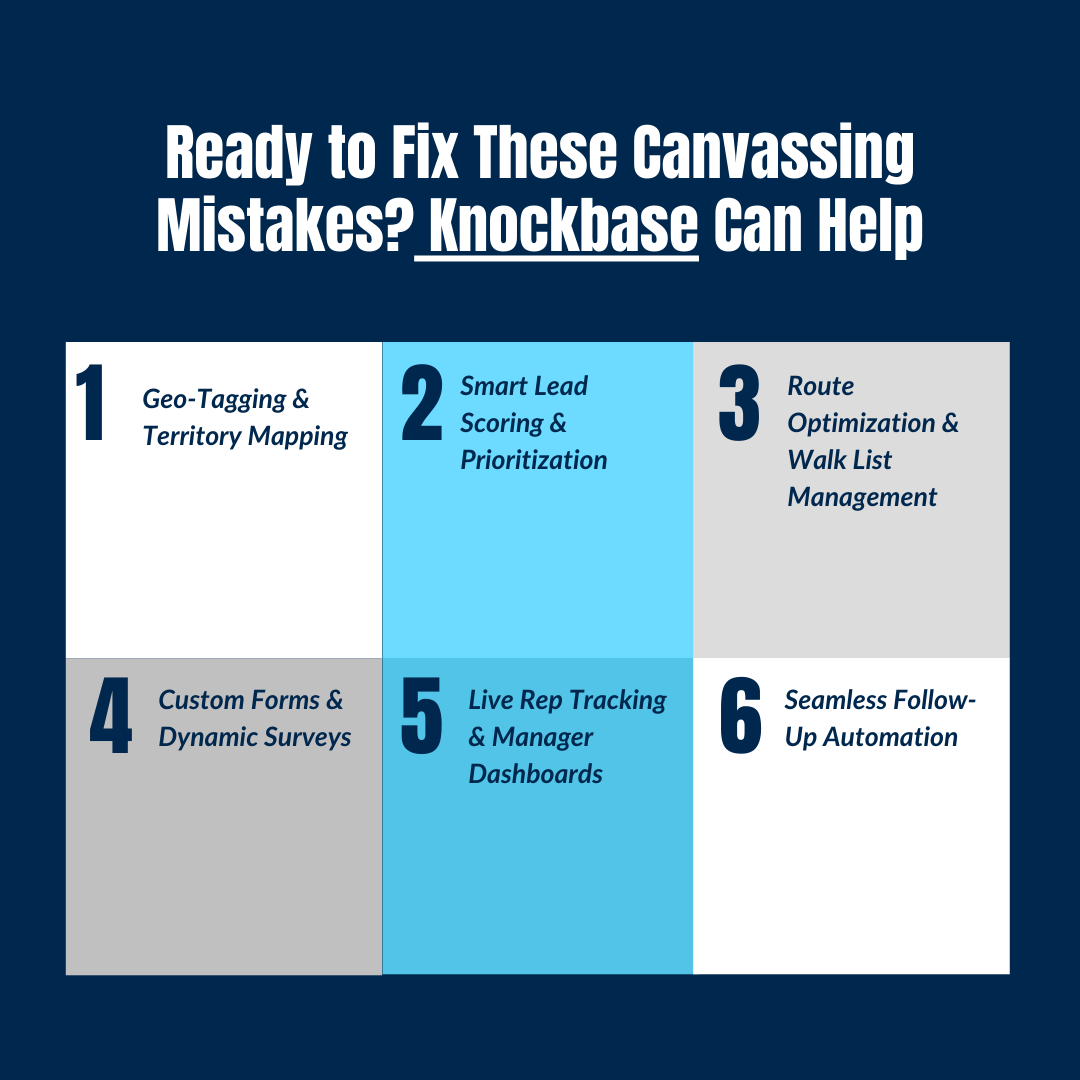
This is where Knockbase turns hard canvassing efforts into measurable campaign success. Designed for both political canvassing and sales teams, it eliminates the small but costly canvassing mistakes that derail even the most determined groups. Here’s how:
1. Geo-Tagging & Territory Mapping
Every knock, conversation, and response is logged with GPS precision. Managers can assign territories, track coverage, and ensure no neighborhood or house is overlooked.
Better territory control means smoother door-to-door campaigns and stronger connections with your target audience.
2. Smart Lead Scoring & Prioritization
Not every resident or voter has the same intent. Knockbase automatically ranks new leads based on behavior, past interactions, or campaign rules.
So, canvassers spend less time guessing and more time focusing on the prospects most likely to engage, respond, and convert.
3. Route Optimization & Walk List Management
Say goodbye to wasted steps and messy walk lists. Knockbase builds efficient walking routes that cut travel time, reduce burnout, and maximize conversations per door.
Lists and routes adjust dynamically based on coverage, so canvassers are always prepared.
4. Custom Forms & Dynamic Surveys
Campaigns thrive on good data. With Knockbase, canvassers can log talking points, capture responses, and record interests instantly through mobile-friendly forms.
Whether you’re collecting voter concerns before election day or customer insights for a business campaign, every detail is structured for smarter follow-ups.
5. Live Rep Tracking & Manager Dashboards
Know where your team is and how they’re performing in real time. From tasks completed to leads developed, managers get instant clarity to coach, redirect, or motivate, keeping morale high and canvassers engaged despite rejection or challenges.
6. Seamless Follow-Up Automation
The most effective way to win is consistency. Knockbase automates reminders, re-contact prompts, and thank-you messages, ensuring no lead, voter, or customer slips through the cracks. Timely follow-up means your campaign efforts don’t go to waste.
With Knockbase, you don’t just knock, you engage, adjust, and maximize success. Every door, every conversation, every resident becomes part of a bigger, smarter, more strategic plan.
Final Thoughts: Making Every Knock Count
At the end of the day, all the work you put into canvassing isn’t about numbers; it’s about people. What makes a campaign truly successful is the importance of how you’re communicating, not just what you’re saying.
Every knock is a chance to present your cause with heart, to participate in real conversations, and to show persistence when rejection tries to break your spirit.
The difference between effort and impact lies in using the right methods, smart resources, and simple tips that make the whole process smoother. Work smarter, not harder, and every door becomes an opportunity.
About Knockbase
Knockbase is the all-in-one canvassing solution that saves time, money, and effort by optimizing walk lists, logging data, and automating follow-ups and mail. With real-time dashboards, you can identify what works, keep teams motivated, and turn little persistence into big wins.
Don’t let body language mistakes or poor strategic approaches hold you back; every missed knock is a missed chance.
Now that you’ve already explored the pitfalls, now’s the perfect time to take the smarter path with Knockbase. Request a demo and start your trial today.
FAQs
1. What is the best time to canvass?
Weekends midday to evening, or weekday evenings (6–9 PM). Avoid dinner time and late nights.
2. How can Knockbase improve team morale and productivity?
By eliminating wasted effort, showing real-time progress, and helping volunteers see their impact.
3. What are the essential features of an effective walk list?
Accurate, up-to-date data, no duplicates, targeted by turnout or interest, and synced with your software.
4. How important is technology in modern canvassing?
Crucial. In 2023, 92% of reported campaign knocks were logged digitally. Without tech, follow-ups and data tracking collapse.
5. How should a canvasser handle rejection?
Smile, thank them for their time, and move on. Every “no” gets you closer to the next “yes.”


